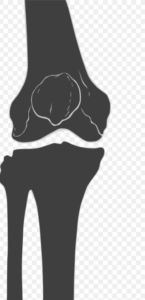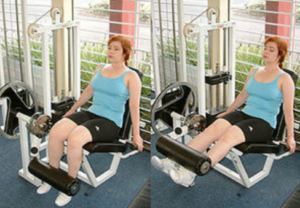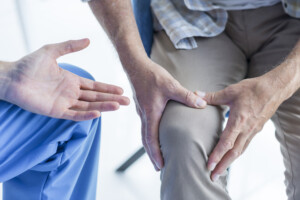Do you suffer from kneecap pain – and sharp – when you go up a staircase?
Are you noticing that this is usually the only time that your sharp knee pain occurs?
Something is definitely wrong. Knees are supposed to support us when we walk up a flight of stairs.
“Other than pain around the knee cap related to an injury, most pain under, around or in the kneecap is related to pressure or damage to the cartilage of the kneecap and the area underneath it where the kneecap glides,” explains Barbara Bergin, MD, board certified orthopedic surgeon at and co-founder of Texas Orthopedics, Sports & Rehabilitation Associates.
Dr. Bergin continues, “This area is called the femoral trochlea, and it is a concave groove at the end of the thigh bone, which matches the convex under-surface of the kneecap.” See the image below.

Patrick J. Lynch, medical illustrator
“The two structures form the patellofemoral joint, which is the fulcrum through which you bend and straighten your knee.
“The times when the most amount of pressure is placed on this joint is when you do things like go up stairs, get up from chairs or squat.
“When you go up a single stair, you put between four to six times your body weight into the surfaces of this joint.
“So, if you weigh 100 pounds, there is about 400-600 pounds of pressure on that joint!
“If you feel sharp pain, specifically when you go up stairs, this is likely due to damage to the cartilage on the [underside of the] kneecap or the femoral trochlea.
“The damage can be acute or chronic.”
This problem goes by four names: patella-femoral syndrome, chondromalacia patella, jumper’s knee and runner’s knee.
An example of an acute injury would be running on wet grass and slipping and sliding forward on it by accident – putting a sudden unnatural load on the kneecap.
The offender for a chronic injury may not be obvious unless you’ve been doing a lot of running or jumping. Chondromalacia patella is no stranger to competitive volleyball players.
“If you are young, say…under 40, this could be cartilage damage in the making,” says Dr. Bergin.
“If you are older, it could be damage which has been there for many years.
“If you hear or feel crunching under your kneecap at the same time [as going up a staircase], this further confirms the presence of damage to that cartilage.”
Some patients describe the sensation as “grating.”
Dr. Bergin adds, “Keep in mind that cartilage has no blood supply, so this damage cannot actually heal and go back the way it was.
“You will always have the damage to the surface of that cartilage. Now you must take steps to limit the ongoing pressure on the cartilage to keep it from getting worse.”
Most cases of chondromalacia patella can be managed quite well conservatively, though surgical smoothing down of the rough surface of the kneecap’s underside cartilage is an option for resistant cases.
Going up the Stairs with Sharp Kneecap Pain
What can you do, then? A physical therapist, after a proper diagnosis, will guide you with exercises.
It’s very easy for a doctor or physical therapist to quickly diagnose chondromalacia patella based on a clinical exam.
A physical therapist will likely have you doing leg extensions, with the goal of eventually using a weight machine.

Leg extension. George Stepanek/CC
Leg extensions strengthen the structures surrounding the kneecap, including the quadriceps muscles, which attach to the kneecap via tendons.
As these muscles become very strong and durable, you will notice perhaps a complete disappearance of your sharp knee pain.
With an overall fitness regimen and a healthy body weight, you can once again be walking, even running, up flights of stairs without any discomfort.
But you must be consistent with the strengthening exercises. Stopping them is bound to cause a return of the pain.
And remaining at a healthy body weight is also crucial. The knee is the most unstable joint in the body. Excess weight, over time, can only harm this joint.

Dr. Bergin is a general orthopedist, surgically and conservatively treating all manner of bone and joint conditions. She enjoys educating patients so they can emerge stronger than they were before their orthopedic injury or surgery.
 Lorra Garrick has been covering medical, fitness and cybersecurity topics for many years, having written thousands of articles for print magazines and websites, including as a ghostwriter. She’s also a former ACE-certified personal trainer.
Lorra Garrick has been covering medical, fitness and cybersecurity topics for many years, having written thousands of articles for print magazines and websites, including as a ghostwriter. She’s also a former ACE-certified personal trainer.
.

























